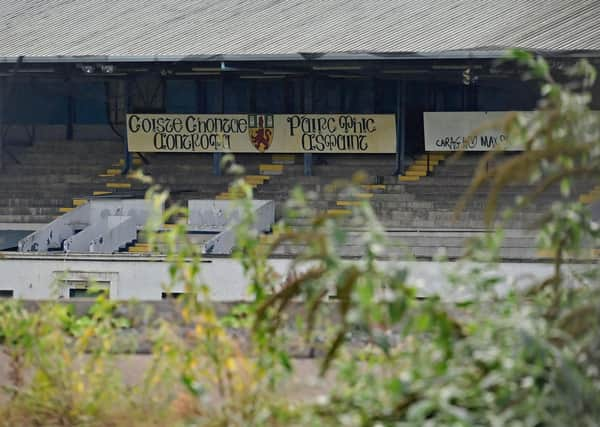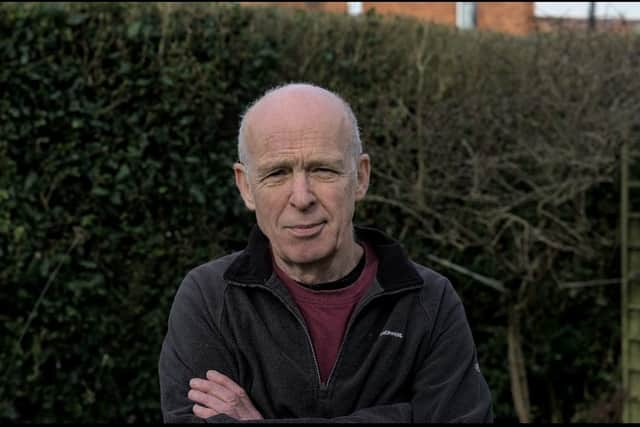Tony Dignan: We local residents deserve to be told what exactly the GAA propose building at Casement - so too the public, who are expected to foot the bill


There is a high and mounting risk that the ground, currently derelict, will not be ready when the Euro Finals kick off in June 2028.
The costs of building a new stadium at Casement Park are rising by the week. This is leading to a growing gap between commitments already made - about £108 million - and the amount required, currently between £220m and £300m.
Advertisement
Hide AdAdvertisement
Hide AdHowever, the funding gap is not the only issue the project faces. More fundamentally, the Casement Park design granted planning permission back in July 2021 does not meet UEFA’s requirements for a Euro Finals stadium.


UEFA requires that a stadium included in a Finals tournament must have at least 30,000 net seating capacity. Windsor Park’s 18,500 capacity falls well short of that mark. With a proposed net spectator capacity of 34,186, a redeveloped Casement Park seems to meet the UEFA requirement. So what’s the problem?
The problem is that the GAA’s planning permission is for a stadium with 26,011 seated and 8,175 in a standing terrace situated on the south side of the ground. That is a shortfall of 4,000 compared with UEFA requirements. Because UEFA prohibits the use of temporary seating and standing spectators, the standing terrace would be no use for the Euro Finals. The minimum 30,000 net seating capacity should be a permanent feature.
The question then is: how can the Casement Park project meet UEFA’s seating requirement? When that question was posed to the Department for Communities (DfC), the main project funder, they answered as follows:
Advertisement
Hide AdAdvertisement
Hide Ad“The seated terrace to the south of the stadium will be constructed for a football configuration, and after the tournament concludes in 2028, will be changed to a UCGAA configuration, with a standing terrace.
“The EURO Tournament fixtures that will be held at Casement Park will accommodate a total of 30,000 seated spectators in order to satisfy UEFA requirements.”
That response points to a two-stage approach: build a 30,000 all-seated stadium for the 2028 Euros, then convert the stadium back to the design granted planning approval. That is, 26,011 seated and 8,175 in a standing terrace.
Alternatively, construct a ‘temporarily permanent’ all-seated stadium specifically for the Euros.
Advertisement
Hide AdAdvertisement
Hide AdThe two-stage approach raises several red flags. First, the two-stage approach will increase the cost of proceeding with the Casement Park redevelopment. For example, installing permanent seating to UEFA’s quality and viewing specifications is likely to be considerably more expensive than a simple standing terrace – not to mention a waste of resources, if the seating was later to be removed.
An associated question: how has the redesign and added costs of this two-stage plan affected delays? Has the redesign work even been completed?
Second, if the stadium does get built for the Euros, but reverts back to the GAA design, the potential for use as a multi-sports venue will be much diminished, at least for UEFA events, since they don’t permit standing spectators.
Third, in light of the significant work and extra costs required to implement a Casement Park design to UEFA’s requirements, did DfC ever consider an extension of capacity at Windsor Park? The short answer is ‘no’. So, with the goal of securing the Euros for Belfast, why was no such appraisal undertaken?
Advertisement
Hide AdAdvertisement
Hide AdFinally, the GAA does not actually have planning permission for construction of a 30,000 all-seated stadium. So does the redesign represent a material or a non-material change to the previously approved design? A material change would require a fresh planning application.
It is possible that replacing a standing terrace with an all-seated design may represent a material change. For example, if the height of the stadium had to be raised. The matter could be resolved by submitting a planning application for a non-material change.
It seems reckless to proceed with the construction of a 30,000 capacity all- seated stadium without clarifying the legality of a temporarily permanent seating configuration. It also seems highly irregular for the government to hand over hundreds of millions in public funding to a project not built to the statutorily approved plans, which could be at risk of enforcement action.
Having fought a protracted planning battle, local residents deserve to be told what exactly the GAA propose building. So too the wider public, who are expected to foot the bill. How, exactly, does a ‘temporarily permanent’ stadium deliver value for money to the public purse?
Tony Dignan lives in west Belfast, close to the Casement Park ground.